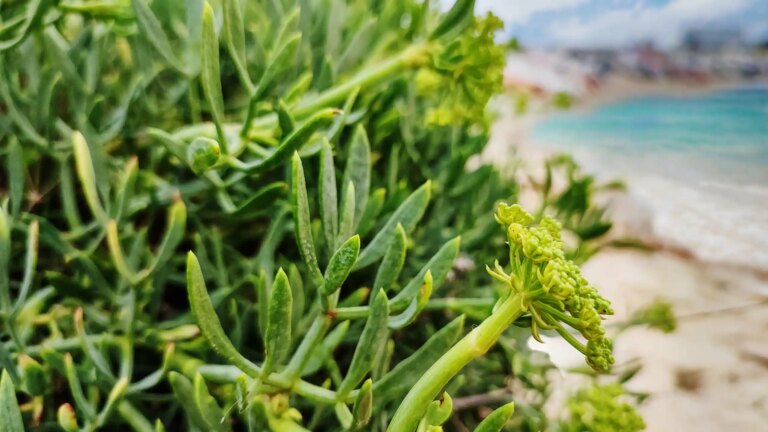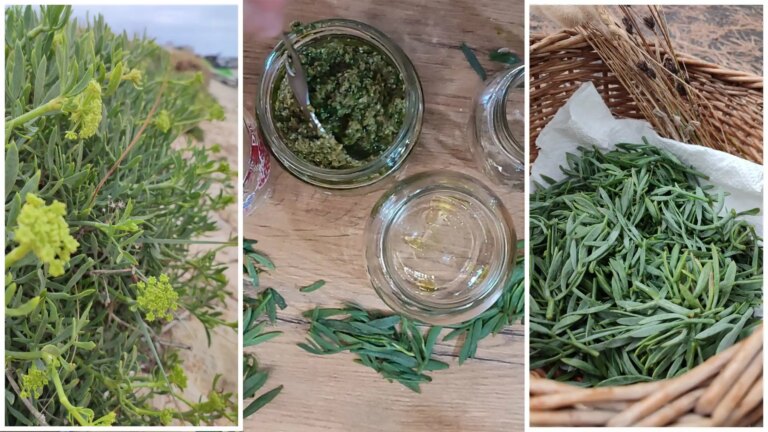Latin name Crithmum Maritimum, popular names for this plant are Rock Samphire, Sea Fennel and Criste Marine. In Croatia, where I’ve harvested it, it’s called Matar or Motar.
Crithmum Maritimum is edible, tasty, aromatic succulent, salt-tolerant plant 😉
I’ve used the fancy Latin name Crithmum Maritimum, just to make sure we don’t get the names mixed up, as many people just call it Samphire, and basically that’s the whole family of Samphire – succulent, salt-tolerant plants.
Table of Contents
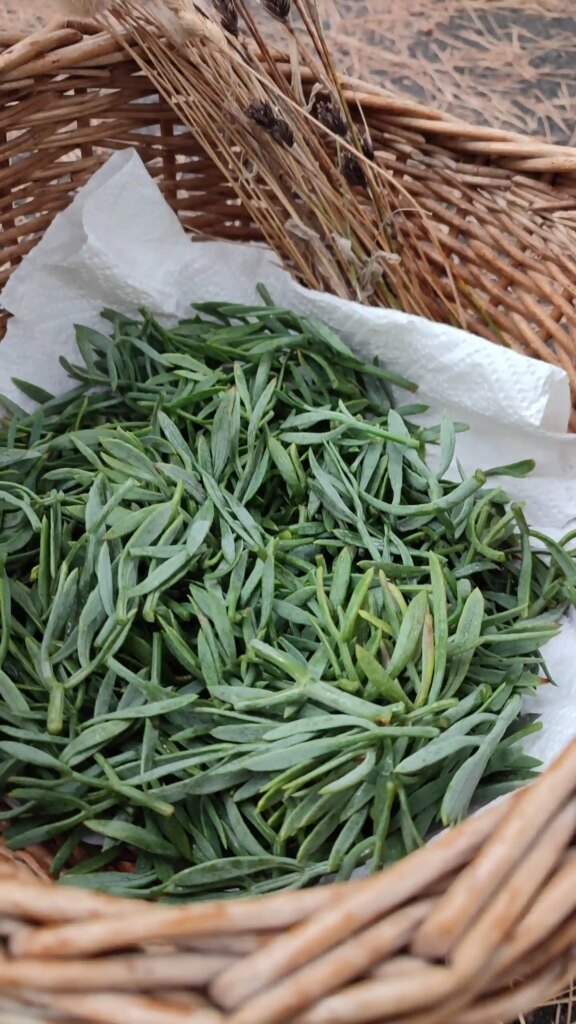
Crithmum Maritimum (Sea Fennel, Rock Samphire)
Crithmum Maritimum, also known as Sea Fennel or Rock Samphire, is a wild aromatic plant that grows on rocky coastal cliffs and beaches across the Mediterranean, UK, on coastlines throughout Europe (north to the British Isles), Macaronesia, parts of West Asia and North Africa in the Atlantic, Mediterranean and Black Sea coasts.
This resilient plant has been enthralling sailors, chefs, and nature enthusiasts for centuries with its tenacious nature, maritime habitat, and mouthwatering flavors.
People have been harvesting and eating this salty, succulent sea veggie since ancient times.
The species name maritimum alludes to its natural habitat in rocky areas along the sea shore. The plant can also be found growing along coastal cliffs where it is hit with salty spray from the sea.
This salty survivor can withstand scorching heat, fretful winds, and oppressive drought in its seaside terrain.
Can I eat Crithmum Maritimum (Rock Samphire)?
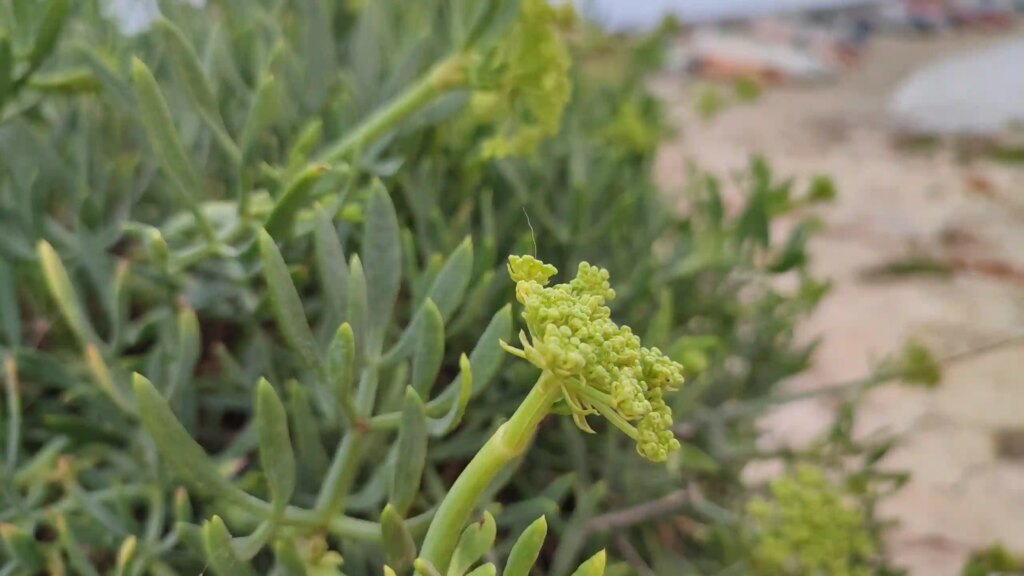
YES you can. There is a common mistake people make when it comes to the edibility of Crithmum Maritimum (Rock Samphire). Many people think that it is edible only in May, when it has a lighter green colour, but this is not true. Crithmum Maritimum is edible all year round. And you can harvest it at any time. The only difference is the taste, which is more intense in some seasons than in others. If you pick soft, not hard, woody leaves, you will be able to enjoy and appreciate this wild gem all year round. Even the flowers are edible at all stages of its growth.
Crithmum Maritimum (Rock Samphire) Identification Guide
How do you identify rock samphire?

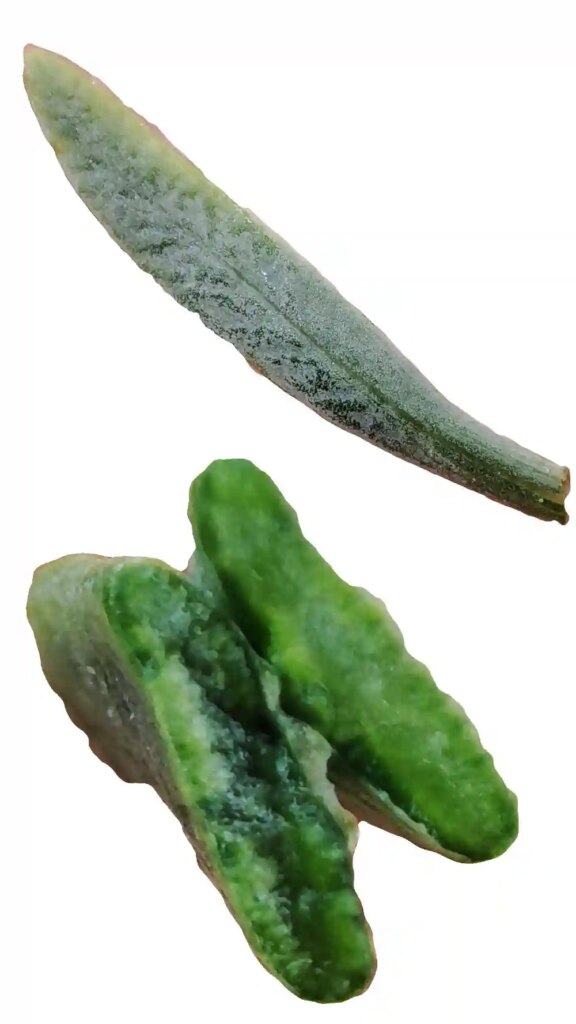
Habitat
It grows on coastal cliffs where the sea spray hits. You’ll also find it lurking on seawalls or peeking through cracks in the pavement along the coast.
Stem
Thick green, almost round stems that look like antlers.
Leaves
Leaves are thick, succulent like, green and full. There is a little bit of juice that comes out when you cut it in half.
Flowers
Tiny umbrella-like clusters of green petals (or white, depending on the season) that look like they’re ready for a floral cocktail party.
Taste
It has a salty kick. Some say fennel or parsley, others detect a hint of liquorice.
Healthy Stuff
It grows on coastal cliffs where the sea spray hits. You’ll also find it lurking on seawalls or peeking through cracks in the pavement along the coast. Full of vitamins A, C, B2, B15 as well as amino acids and minerals. Packed with essential oils such as terpine (citrus), sabinene (carrot), phellandrene (anise) and methyl thymol (thyme).
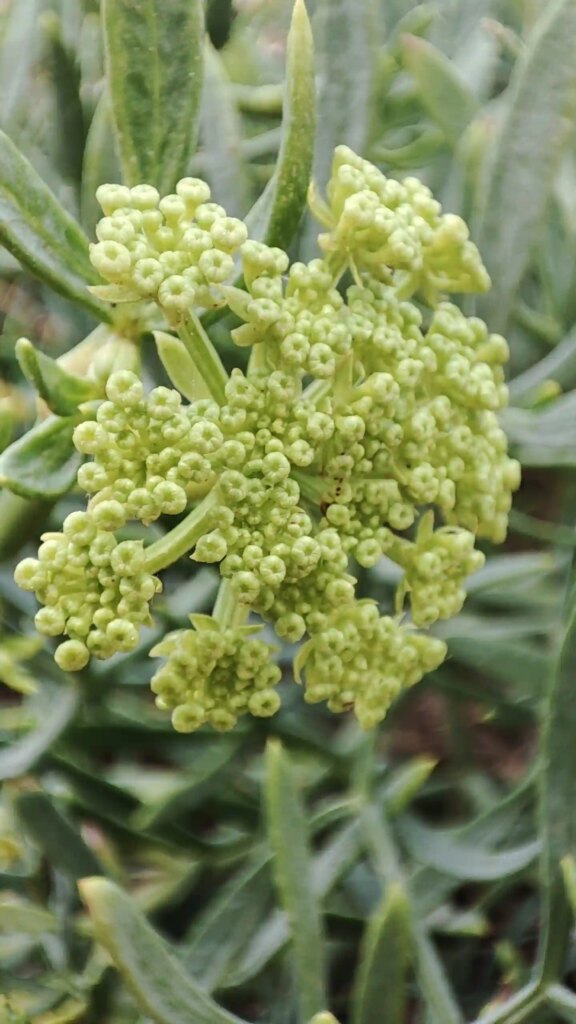
How do you eat rock samphire? A Culinary Coastal Gem
Botanically, rock samphire belongs to the same family as carrots. Its taste has a subtle note of the relative, with a decidedly salty maritime twist.
This sea green makes a zesty addition to salads, pesto, seafood dishes, pickles, even pizza, check my recipes with Rock Samphire below.
Rock Samphire Recipes
Use Your Senses and Forage Responsibly
Although this plant is easy to find, there are plants that may look similar. Pay attention to detail and check that all the distinctive markings are present on the plant you want to forage. If you are unsure, only forage with experienced guides. Harvest only what you need in a sustainable way, taking care not to damage the plant or its fragile habitat.
Interesting Links
Vrtlarica Guide on Croatian – Motar Planting & Cultivation
EatWeeds Guide – Rock Samphire – Crithmum Maritimum
Wild Food UK – Edible Wild Plants: Rock Samphire
Grecianpurveyor – Health Benefits Of Rock Samphire – Sea Fennel
Seedaholic – Crithmum Maritimum (Rock Samphire)


